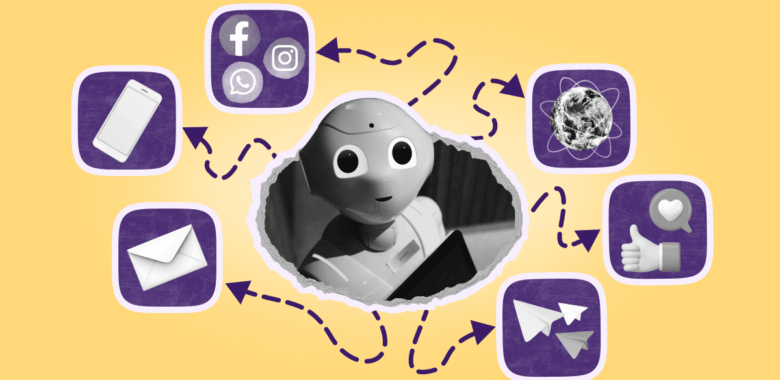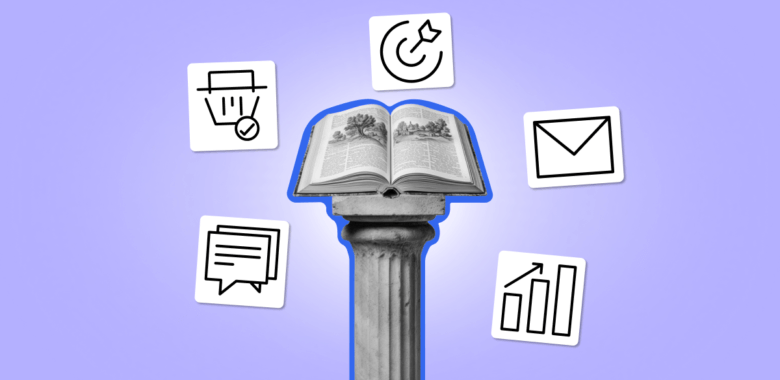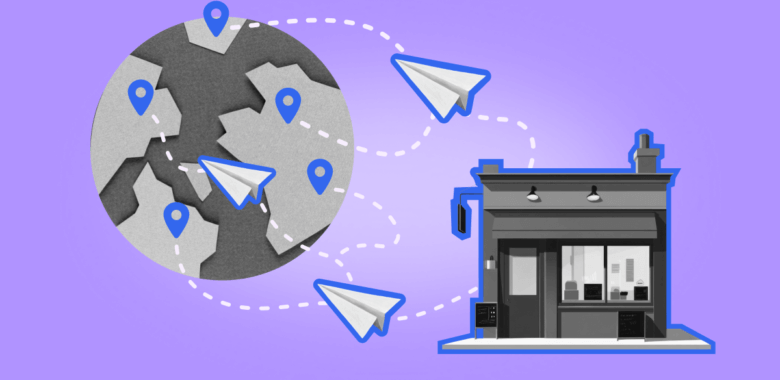Don’t be intimidated by chatbots! You can use Selzy’s visual editor and automation builder to streamline your communication and enhance customer experience. Explore other platform features like AI assistant and signup forms while you’re at it!
What is an omnichannel chatbot?
An omnichannel chatbot is a tool — usually powered by artificial intelligence — that helps your business communicate with customers across different channels — like email, your website, social media, and messaging apps — all within one platform.
An omnichannel chatbot can answer customers’ questions, guide users, and offer support instantly — doesn’t matter when or where the customer is reaching out. For marketers, instead of using separate tools for each platform, an omnichannel chatbot unites everything in one place. Thanks to omnichannel marketing automation, these solutions help to build stronger relationships with customers, support consistent messaging, and allow for fast response times.
Key features that define an omnichannel chatbot
So, what are some of the features that all omnichannel chatbots share?
- Multi-channel availability. One omnichannel chatbot can talk to your customers on every platform — be it your website, email, or messaging apps. This means that you don’t need a separate tool for each platform, and customers can reach you wherever they choose.
- Conversation memory. Omnichannel chatbots store the entire conversation with a customer, even if they switch to a different platform. In addition to this, your team can see the whole conversation in one dashboard without the need to switch between apps.
- Round-the-clock support. Chatbots can answer common questions 24/7, even when your team is offline. This helps customers get support as quickly as possible.
- Consistent voice. The chatbot keeps your brand’s tone of voice and messaging the same across all channels.
- Self-improvement. Most omnichannel chatbots use AI, meaning they can learn from conversations and get better over time. This means fewer mistakes and more helpful replies as time goes on.
The role of omnichannel chatbots in modern business
These days, customers don’t just message businesses in one place. They might reach out via your website, send you a DM on social media, or write an email. This means that businesses have to manage several channels all at once, which can get pretty time-consuming and overwhelming! This is where chatbots come in.
It’s no surprise, then, that more and more businesses are turning to these tools — according to a survey from Tidio, most small and medium businesses are either using chatbots already or planning to do so in the future. Plus, with visual chatbot builders, making one is easier than ever. This figure shows that chatbots are not a fad or a short-term trend – they’re becoming a core feature of how businesses interact and deliver customer support. According to the same research, a whopping 1.5 million users had at least one conversation with a chatbot in 2024.



















